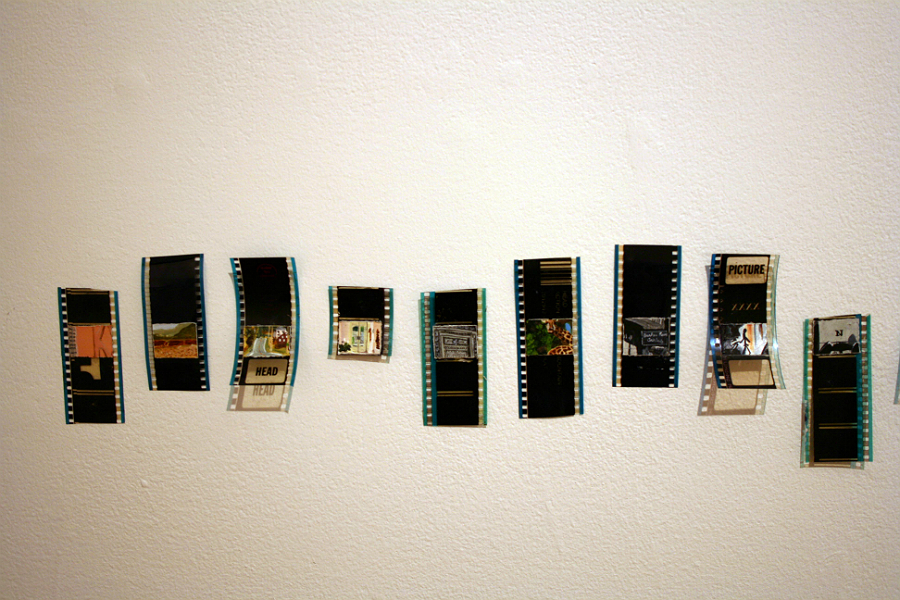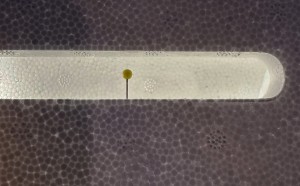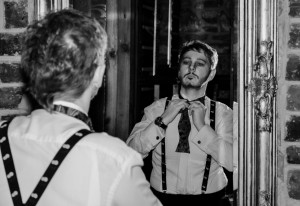Artist as Projectionist: my love of cinema

Artist Andrew Bracey professes his love for the clattering roar of the projector, and how it inspired his most recent exhibition at Transition Gallery and Hackney Picturehouse …
My eyes were opened to film being more than simply entertainment when I borrowed Kieślowski‘s 3 Colours Trilogy from a friend at school. At art college a lecturer showed strange and wonderful films every Tuesday evening; one week it might be the then banned Exorcist or Clockwork Orange, the next an obscure Japanese or Taiwanese ‘classic’ whose title or director I have long since forgotten. As an artist I have had many poorly paid jobs to pay the bills. The best was as a cinema usher at Cornerhouse in Manchester. I saw contemporary films from across the world, as well as hungrily booking extra shifts to gorge on seasons of Ozu, Kurasawa and Herzog masterpieces.
However, my life as a projectionist is usually considered the most magical when I talk to people; perhaps too many of whom have seen Cinema Paradiso. The projectionist has a unique and rather strange way of viewing films. Peering through a scratched, dirty window high up at the back of the cinema, the big screen appears miniature from the booth. The clattering roar of the projectors drowns out any semblance of a soundtrack and the narrative becomes deeply fractured as you dart from projector to projector, between reeling up and breaking down different films.
As the end of the reel approaches the projectionist forensically examines the film, keeping a watchful eye out for the cue-dots. The simple scratches in the right hand corner tell the projectionist that they must start the motor of the machine and get ready for the ‘changeover’. As they only appear for one-sixth of a second, there is an enormous amount of attention focused on this point. Time slows down and the sense of heightened awareness overcomes the projectionist. The projectionist knows forgettable parts of a film in intimate detail and I was struck by how insignificant moments could become potent when they are removed from the narrative of a film.
The more time I spent in the cinema, the more its influence began to creep over into the studio and my work as an artist. So, for example, Frames (2007), is a series of hundreds of different paintings on 35mm filmstrip. Each painting features an image appropriated from a film. There are different groups of paintings derived from lists and polls, such as the top ten most profitable films, the top 100 ‘films of the century’ as selected by the film critics of Village Voice or the top 250 rated films by the public on IMDB.com. Each single image was taken from hundreds of thousands of possibilities that appear during the length of the film. The choice of each image came from a long running interest in non-places or non-moments, so each is essentially not memorable to the viewer within the overall narrative. For example in a film there might appear a brief shot of an aeroplane in the sky, which visually tells the viewer that the narrative has moved from one city to another.
The Jump (2009) is a film installation comprised of a 30-minute animation constructed from over 500 paintings. It is a faithful re-working of Chris Marker’s film La Jetee, famously (almost) completely made out of still B&W photographs. My version replaces each still image from Marker’s original with an colour saturated oil painting. Observing Gallery Behaviour (2011) is a short film constructed from snippets appropriated from films that feature scenes taking place in a gallery. The action moves from normal private-view chit-chat to more absurd brawls and finally a shoot out in the Guggenheim. The Six Most Beautiful Minutes in the History of Cinema (2010-12) mines the history of cinema to create a raging cacophony of 8 frames of images culled from cinema per second for 6 minutes. 2880 scenes from a full range of genres, countries, tastes and time flash repeatedly.
Frames is currently showing in a group exhibition called Still, at Transition Gallery and the Hackney Picture House. The work has been taken full circle and returned to the cinema, from whence the genesis for the idea emerged. All the works in the show feature artists who have taken a freeze frame from a film as a starting point for their work. The show’s curator Cathy Lomax has, since 2009, been creating a painted Film Diary of every film she watches. At the Picture House a large wall has been gridded in colour with all of her 2011 painting. Mimei Thompson uses a still from Tarkovsky’s Stalker, to form the basis for two huge beautiful new paintings. Paul Kindersley’s installation seems straight out of a Dario Argento movie with redder than red blood and huge printed ghoul-like faces looking down at the viewer. Jackie Chettur shows immaculate photographs of constructed film sets made in a hotel, sumptuous in colour with a palette taken from Douglas Sirk.
I think it is natural that art and cinema are crossing over so often at present. Artists such as Pipilotti Rist, Steve McQueen and Julian Schnabel are creating some of the most imaginative and vital films on the big screen, as they become more known as feature film directors. Meanwhile, artists such as Ming Wong (currently showing on Wood St, Liverpool, as part of Liverpool Biennial 2012), Rosa Barba and of course Douglas Gordon are mining cinema’s rich history to create some of today’s most interesting art.
In 2010 I co-curated Unspooling: Artists & Cinema which brought together work from 20 artists in an attempt to raise questions of what we might learn from cinema’s past in order to imagine its future. Next year I will be co-curating Misdirect Movies, at The Royal Standard, Liverpool, and touring the show to other venues. This exhibition will explore how artists are using material from cinema in order to expand the medium of collage into new possibilities. For me, cinema and art are intrinsically linked, both help us to think about and understand the world we live in, and enable us to look at the everyday with fresh eyes.
Andrew Bracey
Still is showing at Transition Gallery and Hackney Picturehouse until 30 September 2012
Tweet this article for a chance to win a year’s subscription to Garageland – an arts and culture magazine published by Transition. Two winners will be chosen at random by the end of the week!





